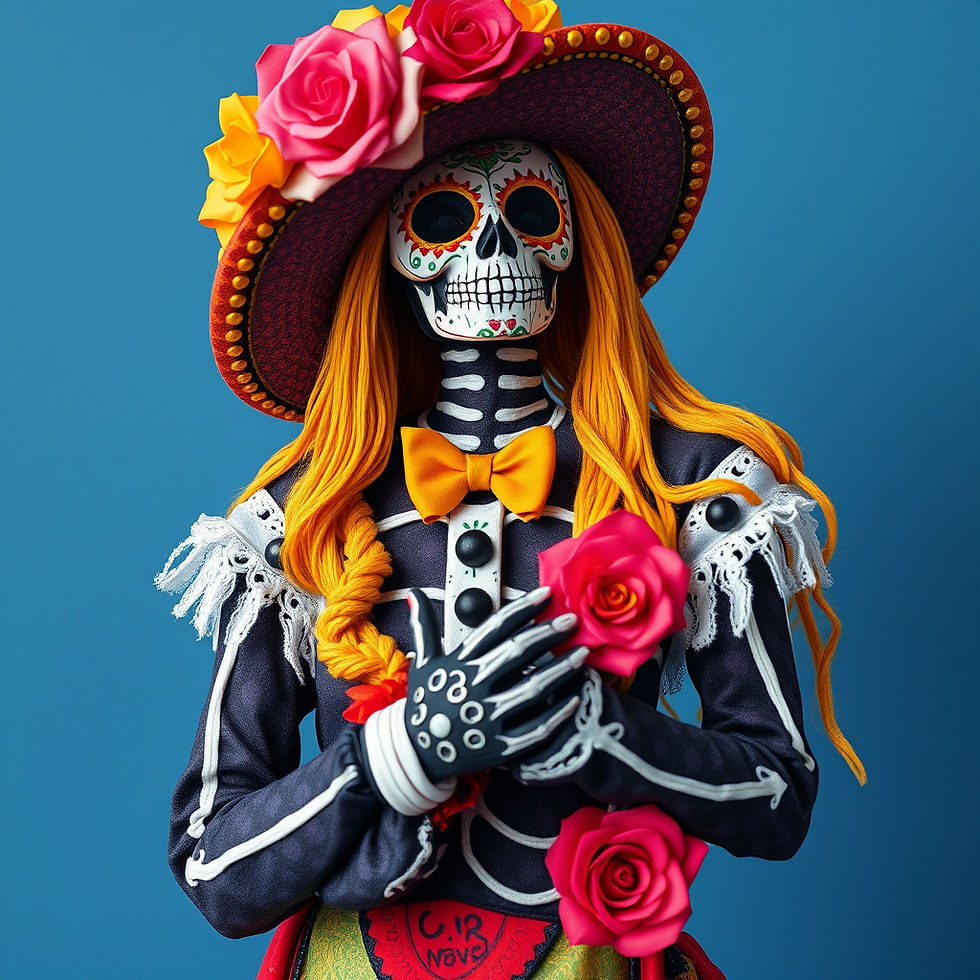Unveiling the Cultural Significance of Día de Muertos Through the Lens of Coco
- profesoracitlalli
- 14 hours ago
- 4 min read
Día de Muertos, or the Day of the Dead, is a vibrant Mexican celebration that honors deceased loved ones with warmth, color, and joy. This cultural event has gained worldwide attention, particularly through the animated film "Coco." Released by Pixar in 2017, "Coco" beautifully illustrates Día de Muertos, highlighting themes of family, memory, and the importance of remembering those we’ve lost. In this post, we will dive into the cultural significance of Día de Muertos as depicted in "Coco," exploring its rich themes and vocabulary that resonate with audiences everywhere.

The Heart of Día de Muertos
Día de Muertos fundamentally celebrates the continuity of life and death together. Families come together to honor their ancestors, sharing stories and memories. The film "Coco" encapsulates this idea through the journey of Miguel, a young boy passionate about music, even as his family forbids it due to a painful history. While Miguel searches for his roots, the importance of remembering those who've passed becomes clear to him and the audience.
Central to this celebration is the "ofrenda," an altar that families create in memory of their loved ones. These often colorful altars typically feature photographs, favorite meals, and personal belongings of the deceased. For instance, a family may place a plate of tamales and a bottle of tequila on the altar for a deceased uncle who loved those treats. This practice emphasizes the belief that the spirits of the departed return during Día de Muertos, fostering reconnections with families that honor them.
Themes of Family and Memory
The theme of family dominates "Coco." Miguel struggles between following his musical dreams and adhering to his family's expectations. This conflict—a choice between individual passion and family loyalty—resonates with many people.
The importance of memories, or "recuerdos," shines through the film. It suggests that forgetting loved ones causes their spirits to fade. For example, if a character neglects to remember their beloved grandfather by not sharing stories, that grandfather’s spirit diminishes in the afterlife. "Coco" reminds us of how essential it is to cherish memories and pass them along. With roughly 80% of participants in Mexican family traditions highlighting storytelling as a way to keep memories alive, the film highlights a crucial cultural practice that many can relate to.
The Role of Music
Music plays a pivotal role in "Coco," acting as a bridge between the living and the departed. The film’s soundtrack, especially songs like "Remember Me," showcases the deep emotional ties music can create. In Mexican culture, music serves as a celebration of life while honoring the deceased.
Traditional Mexican music featured in the film doesn't just enhance the narrative; it brings authenticity. For example, the rhythm of mariachi bands, frequently accompanying fiestas, highlights how significant music is in commemorating loved ones. Through Miguel's experiences, the film effectively communicates that music transcends time, carrying our memories with it and enriching our cultural fabric.

Vocabulary and Cultural Significance
To appreciate the cultural nuances of Día de Muertos featured in "Coco," several vital terms enhance understanding:
Ofrenda: The altar honoring the deceased, decorated with photos, food, and cherished items.
Calaveras: Decorative skulls often made from sugar or clay, painted in vivid colors. They reflect joy in life and acceptance of death.
Cempasúchil: Known as marigold, these flowers are believed to guide spirits to their families with their bright color and scent.
Papel Picado: Colorful, perforated paper banners used for decoration during the celebration, symbolizing life's fragility.
Integrating these terms into discussions about "Coco" allows audiences to grasp the depth of cultural practices that contribute to this vibrant celebration.
The Impact of "Coco" on Cultural Awareness
"Coco" significantly raised awareness about Día de Muertos and its cultural richness. The film introduced global audiences to the beauty of Mexican traditions, fostering appreciation and respect for diverse cultures.
With its engaging storytelling and breathtaking visuals, "Coco" encourages viewers to reflect on their families and heritage. It teaches us that, regardless of our backgrounds, themes like love, memory, and family connect us all. An impressive over 90% of those who watched "Coco" reported learning about Día de Muertos, indicating the film's success in bridging cultural gaps.
As more people learn about Día de Muertos through this film, there is hope the celebration will flourish, uniting generations and cultures for years to come.
Final Thoughts
Ultimately, "Coco" is a heartfelt tribute to the cultural significance of Día de Muertos. Its exploration of family, memory, and music captures the essence of this vibrant celebration. By understanding the themes and vocabulary associated with Día de Muertos, we can appreciate the rich tradition it represents.
Let us remember Miguel's journey as a call to honor our loved ones, celebrate our backgrounds, and cherish the memories that bind us to those we've lost. Día de Muertos is more than a remembrance; it is a joyful celebration of life, love, and family bonds that endure through the generations.




Comments